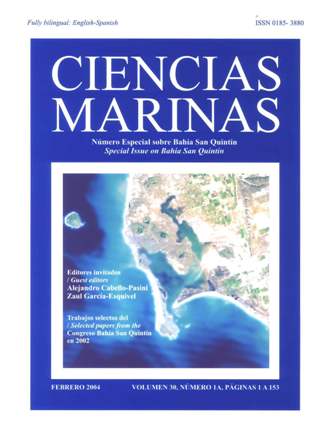Distribution, movements and group size of the bottlenose dolphin (Tursiops truncatus) to the south of San Quintín Bay, Baja California, Mexico
Main Article Content
Abstract
Twelve boat-based photoidentification surveys were carried out along the coast to the south of San Quintín Bay, in Baja California, Mexico, from July 1999 to June 2000; effort was 276.76 km and 31.7 h at sea. Twenty-two schools were encountered and 12.9 h of total observation were spent with 242 dolphins in these schools. The average school size was 11 (SD = 8) dolphins, although it is possible that groups are actually smaller; nursing groups were significantly larger (P < 0.05), with frequent membership exchanges occurring among schools. Dolphins preferred a coastal strip between 250 and 500 m offshore (P < 0.05), at depths below 7 m, and with sandy substrates (P < 0.05). Greater sighting frequencies occurred in two coastal zones (P < 0.05) and feeding was common around the mouth of the bay. Dorsal fin photographs led to the identification of 169 dolphins, and 124 were different individuals. During the study period, the coast south of San Quintín was a pass zone for transient dolphins, since most of the animals (>70%) were sighted one time or stayed for short periods. A total of 220 different dolphins have been identified in the San Quintín area when these data are combined with those gathered by Caldwell (1992) in 1990; these dolphins probably represent a small part of a larger population. More research on the population biology of the bottlenose dolphin in this and adjacent geographic areas is needed to develop better conservation and management strategies for this important natural resource.
Downloads
Article Details
This is an open access article distributed under a Creative Commons Attribution 4.0 License, which allows you to share and adapt the work, as long as you give appropriate credit to the original author(s) and the source, provide a link to the Creative Commons license, and indicate if changes were made. Figures, tables and other elements in the article are included in the article’s CC BY 4.0 license, unless otherwise indicated. The journal title is protected by copyrights and not subject to this license. Full license deed can be viewed here.

